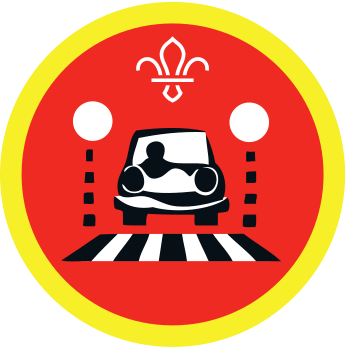Cross correct
You’ll need
Before you begin
- Cut up the cross correct question cards.
Know your crossings
- Everyone should discuss the types of pedestrian crossings you might find on roads, using the images in the cross correct sheet to help them remember. Why is it safer to use a designated crossing place on a road? Which types of crossings are the safest? Which should you be most careful when using?
- Everyone should split into small teams. Give each team a pack of the cross correct question cards.
- Each team should work together to match the features to the type of crossing.
- Everyone should gather together to go over the answers, discussing the reasons behind them. Could any of them match more than one type of crossing?
Play a game
- One person should be the caller. Everyone else is a player. The players should walk around the space. The caller should stand still and hold the pictures of types of crossings and a green card.
- The caller should hold up a picture of a type of crossings and shout out its names.
- The players should do the action for the type of crossing:
- Zebra. Lie down on the floor in a long line to create the white lines of a zebra crossing. Everyone should space out so there is a gap between them.
- Pelican. Stand still and pretend to press a button. Wait until the caller holds up a green card (longer than for puffin crossing), then continue walking.
- Puffin. Stand still and pretend to press a button. Wait until the caller holds up a green card, shout out ‘You’re a genius’, then continue walking.
- Toucan. Pair up. One person pretends to cycle while the other walks.
- Pegasus. Pretend to be riding a horse.
- Everyone should come back together to talk about what they’ve learned about pedestrian crossings. What are some important things to remember about crossing safely? For example, everyone should wait for the green man, wait until cars have stopped before crossing, and not assume that it’s safe just because it’s their turn to cross. How should you safely cross a road when there isn’t a designated crossing?
- Everyone should think about why it’s important to have different types of crossings. How do the different crossings help different people (such as disabled people, children, cyclists, horse riders and drivers)? What features on crossings make them more accessible for disabled people?
Reflection
This activity was about gaining independence and learning to cross the road safely. Why is it important to know how to cross the road independently? Who might appreciate you being safe and careful when crossing roads?
This activity was also about being responsible and trustworthy. Why is it important to be responsible for your own actions and your own safety? Who might be able to learn from your safe and responsible behaviour?
Safety
All activities must be safely managed. You must complete a thorough risk assessment and take appropriate steps to reduce risk. Use the safety checklist to help you plan and risk assess your activity. Always get approval for the activity, and have suitable supervision and an InTouch process.
Spend more time looking at the pictures of the different crossings if they are new to the group. Make up your own actions for the crossings and add more for specific scenarios.
If anyone struggles with reading, make sure they’re in a group with someone who’s more confident and happy to read the questions aloud.
Adapt the actions so they’re accessible for everyone – you might need to do them all sitting down, for example.
Buddy the group up, and explain that having a buddy or walking with an adult is something they can do in real life to support each other crossing the road safely.
All Scout activities should be inclusive and accessible.
